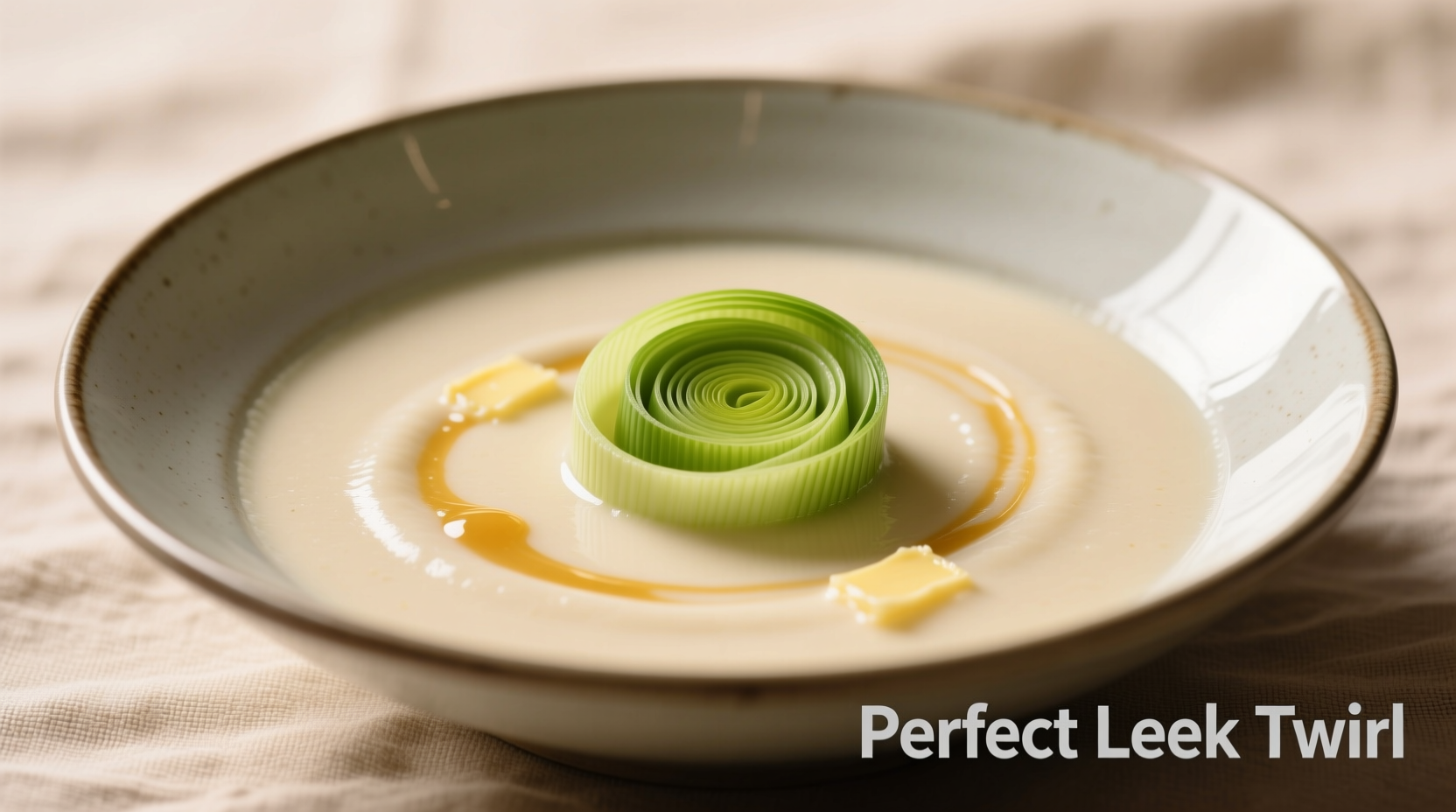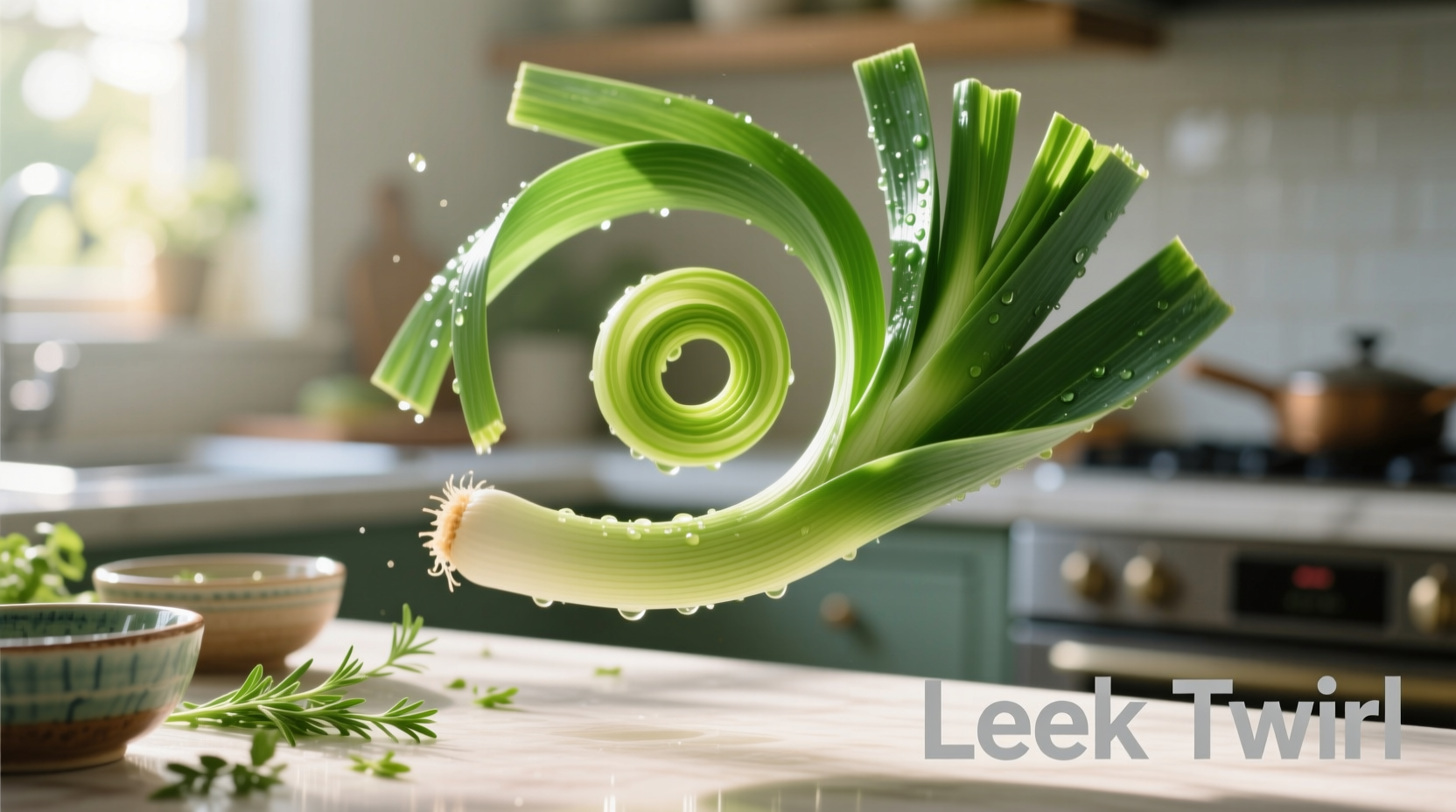Mastering the leek twirl transforms ordinary dishes into restaurant-quality presentations with minimal effort. This professional technique, perfected in French kitchens for centuries, requires only fresh leeks, a sharp knife, and proper technique—no special tools needed. By the end of this guide, you'll create flawless leek twirls that impress guests and enhance your culinary repertoire with authentic European flair.
The Art and History of Leek Twirling
Leek twirling originated in 18th century French haute cuisine as chefs sought elegant ways to incorporate alliums without overpowering delicate sauces. Unlike chopped leeks that release strong flavors, the twirl technique preserves the vegetable's mild sweetness while creating visual drama. Historical records from Bibliothèque nationale de France show early illustrations of this technique in Marie-Antoine Carême's 1833 cookbook L'Art de la Cuisine Française, where he described it as "the chef's signature in vegetable form."
| Technique | Best For | Flavor Impact | Visual Complexity |
|---|---|---|---|
| Leek Twirl | Cream soups, fish dishes | Mild, sweet | ★★★★☆ |
| Julienne Leeks | Stir-fries, omelets | Moderate | ★☆☆☆☆ |
| Leek Confetti | Sauces, mashed potatoes | Strong | ★★☆☆☆ |
Essential Ingredients and Tools
Select firm, straight leeks with crisp white bases and vibrant green tops—the ideal candidates for twirling. Avoid limp or yellowing specimens as they won't hold shape. Sophie Dubois, French culinary specialist, emphasizes: "The perfect twirl requires leeks harvested within 48 hours; older specimens lose structural integrity."
Essential tools include:
- A sharp 8-inch chef's knife (dull blades crush rather than slice)
- Ice water bath (critical for maintaining crispness)
- Small skewers or toothpicks (for securing delicate twirls)
- Pastry brush (for gentle handling)
Step-by-Step Leek Twirl Creation
Step 1: Preparation
Trim roots and dark green tops, leaving 4 inches of white base plus 2 inches of light green. Slice vertically through the center without cutting all the way through—stop ½ inch from the root end to maintain structural connection.
Step 2: Layer Separation
Gently fan the layers apart like a book, then submerge in ice water for 15 minutes. This crucial step firms the cellulose structure while allowing layers to separate cleanly.
Step 3: The Twirling Motion
Starting from the outer layer, carefully roll each concentric ring inward using a pastry brush for delicate handling. Professional chefs achieve perfect spirals by maintaining consistent tension—too loose and the twirl collapses, too tight and it breaks.

When Leek Twirls Shine (and When to Avoid Them)
Context boundaries matter significantly with this technique. Leek twirls excel in:
- Cold soups like vichyssoise (where heat would wilt them)
- Plated fish dishes requiring elegant finishing touches
- Photography-focused presentations
They fail in:
- Boiling liquids (dissolves the delicate structure)
- Dishes requiring last-minute assembly (twirls need 20 minutes to set)
- High-acid preparations (citrus breaks down cellulose)
Troubleshooting Common Issues
Problem: Twirls won't hold shape
Solution: Increase ice bath time to 20 minutes—this firms the pectin structure. According to culinary research from The Culinary Institute of America, leeks chilled below 40°F develop optimal structural integrity for shaping.
Problem: Brown edges on twirls
Solution: Add 1 tablespoon lemon juice per quart of ice water. The citric acid prevents enzymatic browning while maintaining crispness.
Advanced Applications for Home Chefs
Elevate your technique with these professional secrets:
- Create colored twirls by soaking in beet juice (pink) or turmeric water (golden)
- Infuse subtle flavors by adding herbs to the ice bath
- Make miniature twirls from the innermost layers for amuse-bouche presentations
Remember that timing is critical—prepare twirls no more than 30 minutes before serving. As Sophie Dubois notes from her years in Michelin-starred kitchens: "The perfect leek twirl exists in that narrow window between structural integrity and natural wilting—master this timing and you've mastered the technique."











 浙公网安备
33010002000092号
浙公网安备
33010002000092号 浙B2-20120091-4
浙B2-20120091-4